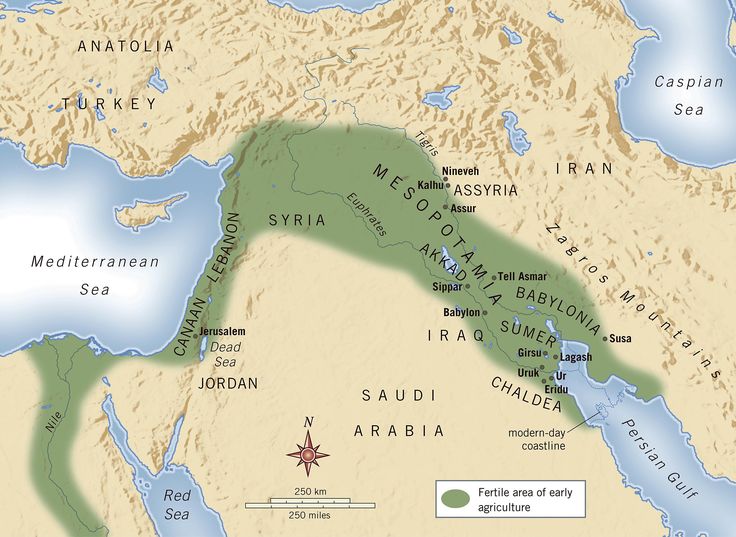Science, as we know it today, is the result of thousands of years of human curiosity, experimentation, and observation. Its roots extend deep into human prehistory and were significantly shaped by the early civilizations of the ancient world. Among these, Mesopotamia—often called the "Cradle of Civilization"—stands out for its remarkable advancements. This article explores how scientific knowledge evolved from the prehistoric era to the Mesopotamian civilization, shedding light on humanity's early steps toward understanding the natural world.
1. Science in Prehistoric Times
Understanding Prehistory
Prehistory refers to the time before the invention of
writing, roughly dating from 2.5 million years ago to around 3000 BCE. During
this vast period, early humans began developing basic skills that laid the
groundwork for scientific thinking.
Primitive Science and Technology
Though prehistoric people did not have formal science, their
daily survival depended on observing natural phenomena and making practical
innovations:
- Tool-making:
The development of stone tools in the Paleolithic era shows a basic
understanding of materials and mechanics.
- Fire
use: Mastering fire was a major scientific leap that involved control
over energy and its uses for cooking, warmth, and protection.
- Observation
of nature: Early humans studied animal behavior, weather patterns, and
plant life for hunting, gathering, and survival.
- Calendars
and seasons: By the Neolithic period, people began to notice seasonal
cycles, which influenced planting and harvesting, foreshadowing
agricultural science.
Transition to Settled Life
With the advent of agriculture around 10,000 years ago,
humans transitioned from nomadic life to settled communities. This Neolithic
Revolution demanded new knowledge in irrigation, crop rotation, storage, and
construction—all requiring rudimentary scientific understanding.
2. Mesopotamian Civilization and the Birth of Science
Geographic and Historical Context
Mesopotamia, meaning “Land Between the Rivers” (the Tigris
and Euphrates), emerged around 3500 BCE in what is now modern-day Iraq. This
region was home to powerful city-states like Sumer, Akkad, Babylon, and
Assyria.
Mesopotamians were among the first to develop writing (cuneiform), urban planning, and formal institutions. These advances provided a foundation for systematic observation and record-keeping—essential tools in the development of science.
Mesopotamian Contributions to Science
A. Astronomy and Mathematics
Mesopotamian science was deeply intertwined with religion
and astrology, yet it displayed a surprisingly advanced understanding of
celestial and numerical systems.
- Lunar
Calendar: Sumerians created one of the earliest lunar calendars, based
on moon phases. This helped regulate religious festivals, agriculture, and
civil affairs.
- Ziggurats
as Observatories: These stepped temples also served as platforms for
star observation, showing a link between architecture and early science.
- Planetary
Movements: Babylonians tracked the movement of planets and stars. They
accurately predicted eclipses and created star charts.
- Mathematics:
They used a base-60 (sexagesimal) number system, which still influences
how we measure time (60 seconds/minute, 60 minutes/hour). They developed
multiplication tables, geometric principles, and even early forms of
algebra.
B. Medicine
Mesopotamian medicine combined spiritual beliefs with
empirical practices.
- Diagnostic
Texts: The "Diagnostic Handbook" by Esagil-kin-apli is a
notable example, listing symptoms, diagnoses, and treatments.
- Herbal
Remedies: Extensive use of medicinal plants was documented in
cuneiform tablets.
- Surgery
and Treatment: Practices included surgery, bandaging, and the use of
various drugs derived from plants and minerals.
C. Engineering and Technology
- Irrigation
Systems: Sophisticated canals, dikes, and reservoirs reflect advanced
hydraulic engineering.
- Construction
Techniques: The use of bricks, arches, and detailed urban planning
illustrates their understanding of materials and structural forces.
- Metallurgy:
They worked with copper, bronze, and later iron, advancing both weaponry
and tools.
D. Agriculture and Botany
- Crop
Management: Mesopotamians domesticated wheat, barley, and dates, and
implemented irrigation to expand agricultural productivity.
- Botanical
Knowledge: They understood plant lifecycles, seed sowing times, and
used grafting techniques.
4. Evolving Scientific Understanding
Mesopotamian science was not experimental in the modern
sense but was systematic and observational. It served both practical and
religious functions. Their scientific legacy was preserved and transmitted to
later civilizations such as the Greeks, Persians, and Romans.
This progression from prehistoric intuition to organized
inquiry marks a critical step in humanity's intellectual development. The
Mesopotamians demonstrated that science could be used to solve real-world
problems—an idea that continues to shape our world today.
5. Legacy and Influence
- Influence
on Greek Science: Greek scholars like Pythagoras and Hipparchus
studied Babylonian astronomical records.
- Calendrical
Systems: The 12-month calendar and 7-day week derive partly from
Mesopotamian timekeeping.
- Mathematical
Impact: Their sexagesimal system still influences our mathematics and
geometry.
Conclusion
From the silent ingenuity of prehistoric humans to the
calculated wisdom of the Mesopotamians, the path of science has been one of
continuous growth and adaptation. These early societies laid the foundation for
our modern scientific worldview, demonstrating that curiosity, observation, and
innovation are timeless human traits. By studying these civilizations, students
can appreciate the deep roots of science and be inspired to carry its torch
into the future.
- #WhatIsScience
- #ScienceEducation
- #HistoryOfScience
- #AncientScience
- #ScientificThinking
- #ScienceFacts
- #STEMEducation
- #ScienceMatters
- #LearningScience
- #ScienceExplained
- #Prehistory
- #StoneAgeScience
- #NeolithicRevolution
- #HumanOrigins
- #EarlyHumans
- #ToolMaking
- #PrehistoricTechnology
- #FireDiscovery
- #AgriculturalRevolution
- #PrimitiveScience
- #Mesopotamia
- #MesopotamianScience
- #BabylonianAstronomy
- #SumerianInventions
- #AncientMesopotamia
- #CuneiformScience
- #ZigguratAstronomy
- #AncientMathematics
- #MesopotamianMedicine
- #CradleOfCivilization
- #WSC321
- #ScienceCourse
- #EducationalContent
- #AcademicLearning
- #HistoryCourse
- #ScienceSyllabus
- #StudentResources
- #UniversityStudies
- #ScienceLectures
- #CurriculumSupport
- #KnowledgeIsPower
- #StayCurious
- #ExploreHistory
- #ScienceLovers
- #AncientKnowledge
- #HistoricalScience
- #ScienceThroughTime
- #DiscoverScience
- #EvolutionOfScience
- #ScienceInCivilizations


















0 Comments